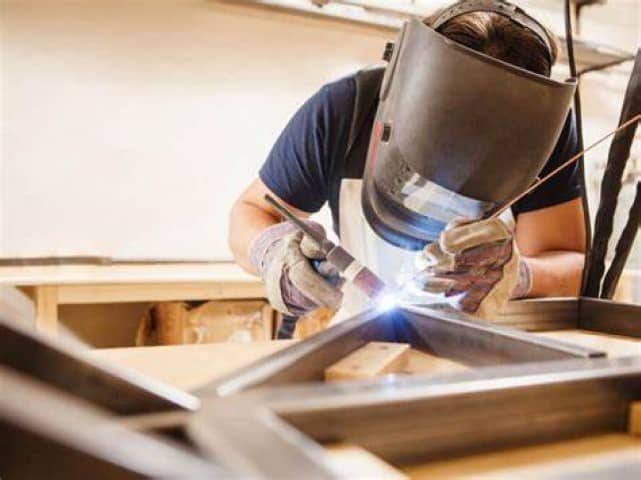Welding Quality Inspection: Ensuring Excellence in Welding Processes
Welding is a fundamental process in various industries, from construction and manufacturing to aerospace and automotive. Ensuring the quality of welded joints is of paramount importance to guarantee the safety, reliability, and performance of the final products. Welding quality inspection plays a crucial role in this regard, and in this post, we will delve into the depths of this essential aspect of welding.
Welding quality can be affected by a multitude of factors. Understanding these factors is the first step towards effective inspection. Variables such as the type of welding process used, the materials being welded, the skill level of the welder, and the environmental conditions all contribute to the quality of the weld. For example, different welding processes have their unique characteristics and potential issues that need to be considered during inspection.

One of the key aspects of welding quality inspection is the visual examination. This initial assessment allows inspectors to identify obvious defects such as cracks, porosity, undercuts, and excessive spatter. Visual inspection requires a trained eye and an understanding of what to look for. Even the smallest imperfections can have significant implications for the integrity of the weld. Additionally, advanced techniques like dye penetrant testing and magnetic particle testing can be employed to detect surface and subsurface defects that may not be visible to the naked eye.
Non-destructive testing (NDT) methods are an integral part of welding quality inspection. These techniques enable inspectors to evaluate the weld without causing damage. Ultrasonic testing is a commonly used NDT method that can detect internal flaws and discontinuities. Radiographic testing is also employed in some cases to provide detailed images of the weld’s internal structure. Each NDT method has its advantages and limitations, and choosing the appropriate one depends on the specific requirements of the weld and the industry standards.
The importance of proper documentation in welding quality inspection cannot be overstated. Detailed records of the inspection process, including the results, observations, and any remedial actions taken, are essential for traceability and quality assurance. This documentation not only serves as evidence of the inspection but also helps in identifying trends and areas for improvement. It is crucial to maintain accurate and up-to-date records to ensure the long-term reliability of the welded components.
In addition to the technical aspects, the human element in welding quality inspection is equally important. Skilled and experienced inspectors are vital for accurate assessment and decision-making. They need to have a deep understanding of welding processes, NDT techniques, and the relevant standards and codes. Ongoing training and professional development are necessary to keep up with the latest advancements in the field and ensure that inspectors are equipped with the knowledge and skills to perform their duties effectively.
Quality control measures should be in place throughout the welding process, not just at the inspection stage. This includes proper material handling, welding procedure qualification, and continuous monitoring of the welding parameters. By implementing these measures, potential issues can be identified and addressed early on, reducing the likelihood of defective welds. Regular audits and inspections of the welding facilities and equipment are also essential to maintain a high level of quality.
The standards and codes that govern welding quality inspection provide a framework for ensuring consistency and compliance. These standards are developed by industry experts and regulatory bodies to ensure the safety and performance of welded structures. Adhering to these standards is not only a legal requirement but also a fundamental principle for maintaining quality. Inspectors must be well-versed in the relevant standards and ensure that the welded components meet or exceed these requirements.
The impact of welding quality inspection extends beyond the immediate product or structure. It has implications for the overall safety and reliability of various systems. Poorly welded components can lead to failures, which may have serious consequences in critical applications. From bridges and buildings to industrial machinery and aerospace vehicles, the quality of welding is directly linked to the safety and functionality of these systems. Therefore, investing in effective welding quality inspection is an investment in the safety and future of our society.
In conclusion, welding quality inspection is a complex yet essential process that ensures the integrity and performance of welded joints. By understanding the factors that affect welding quality, employing appropriate inspection techniques and methods, maintaining accurate documentation, and upholding the relevant standards, we can guarantee the quality of welding in various industries. The skilled inspectors and the rigorous quality control measures play a crucial role in safeguarding the safety and reliability of our built environment. As technology continues to advance, the field of welding quality inspection will also evolve, providing even more effective means of ensuring the highest quality in welding. So, let us recognize the importance of welding quality inspection and strive for excellence in this vital aspect of our industrial and technological endeavors.
Learn more Successful Arctic module fabrication, steel structure, modular and skid, steelwork, supplier audit, DNV Class, Oil & Gas, welding supervisor, welding quality inspection, CWI CSWIP welding inspector, pump and pipe, stainless steel fabrication and CNAS ISO 17025 9712 NDT NDE practice via below-
https://www.jsc-safe.com/steel-structures-modules-machining/
